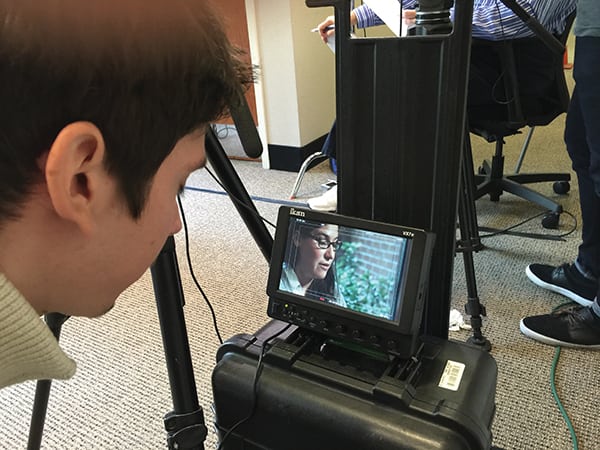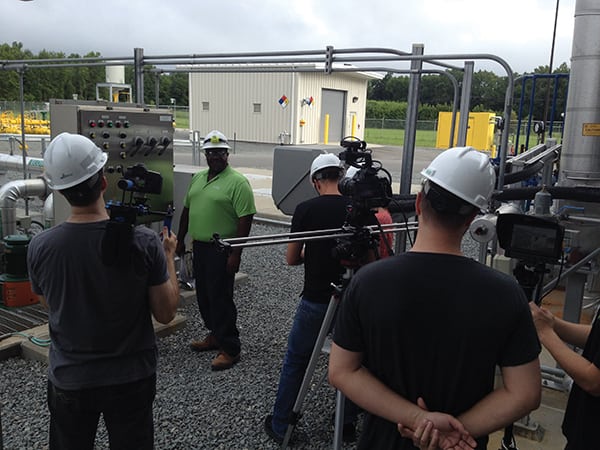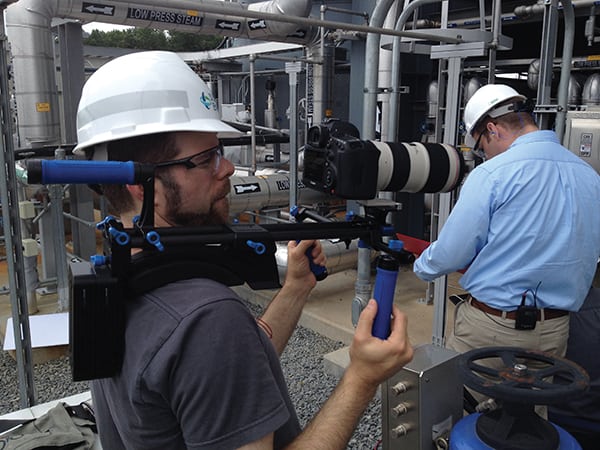2. Second worker repeating the instruction back in his or her own words to the sender.
3. The sender verbally acknowledging that the second worker correctly understands the instruction, typically by responding, “That’s correct.”
The phonetic alphabet assigns code words to the alphabet; the NATO phonetic alphabet is the most widely used version in the fossil power industry. A is alpha, B is bravo, etc. These tools are used when verbally communicating all alpha or alpha-numeric designations and is especially important when a single letter is the only difference in the identities of two pieces of equipment. In the video scene, a supervisor in a control room uses a walkie-talkie to instruct a technician in the field to swap over the alpha pump. In a very noisy plant location, the technician mishears the pump name as the bravo pump. When he repeats this, the supervisor corrects him, thus avoiding a mistaken action. The scene demonstrates how what might appear to be a trivial and unnecessary routine is actually vital.
Pre-Job Brief. A pre-job brief is a meeting of workers and a supervisor before a job to discuss the tasks involved, hazards, and related safety precautions. It ensures everyone understands the scope of the work, the procedural steps, his or her responsibilities, and the hazards and controls. A pre-job brief is used prior to a task that is not part of a normal routine or prior to a task that, if performed incorrectly, would have significant consequences. In the video, a supervisor greets five co-workers. He tells them about a new work order that’s been received. After giving each member of the group a copy of a checklist, the supervisor reviews the tasks to be performed and describes the preparation that’s needed.
Clearance and Tagging Process—Execution (Overview). Clearance and tagging programs at electric generating stations are designed to protect personnel from injury and to protect plant equipment from damage. The clearance and tagging process changes the baseline configuration of an electric power plant (the normal operating condition) to a different configuration (a condition that supports hands-on work on equipment in a situation where personnel could otherwise be exposed to hazards).
A robust and clearly documented clearance and tagging process, LOTO, is critical for the protection of workers and equipment and for the performance of effective operations and maintenance. This video is an introduction, explaining the overall function of LOTO and an overview of the steps needed to properly establish a LOTO on a piece of equipment.
Clearance Writer and Approver. This video provides a description of the clearance writer and the clearance approver in the LOTO process. The clearance writer develops a clearance that safely establishes an energy-free boundary for workers based on the defined scope of work to be performed. The clearance approver verifies that all previous clearance steps have been performed correctly and provides a validation that the boundary established by the clearance writer safely protects the workers from any energy sources.
Clearance Hanger and Verifier. This video provides a description of the clearance hanger and the clearance verifier in the LOTO process. The clearance hanger physically aligns the plant equipment in accordance with the approved clearance paperwork and hangs the clearance tags, or tags and locks, as appropriate. The clearance verifier provides an independent check that the plant equipment is in the required position and correctly tagged, or tagged and locked, as appropriate.
Clearance Holder and Zero-Energy Checks. This video provides a description of the clearance holder and the importance of zero-energy checks in the LOTO process. The clearance holder performs a physical walkdown, verifying effective isolation of the equipment to be worked. The clearance holder also confirms all zero-energy checks. Various zero-energy checks and examples are described.
Future Videos
EPRI plans to continue expanding the video library. In 2016, a new video series on “What Does Good Shift Turnover Look Like?” will be added to the video library. ■
— Dwayne Coffey (dcoffey@epri.com) is principal program manager in EPRI’s Operations Management and Technology Program.




